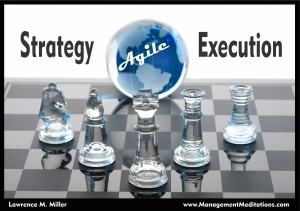Invisible Waste – Removing Friction from the Lean System
There are two words that are keys to eliminating invisible waste in organizations. These are adaptation and alignment. The failure of organizations to adapt to the dynamics of the external landscape and the failure to align internal systems and behavior both result in wasted energy. They both cause friction, friction between the organization and the environment and friction between members of the organization. Whether it is in a mechanical system or in a human system, friction is wasted energy. Too many leaders and change agents fail to address this form of waste.
Read More






